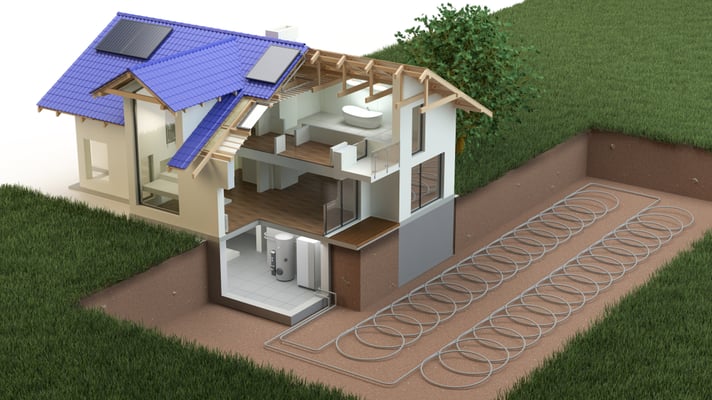Switching from Gas Heaters to Heat Pumps: Benefits and Challenges

Space heating is one of the highest energy expenses in buildings, and combustion-based heating in particular is a major source of emissions. Based on data from thousands of buildings, the NYC Urban Green Council found that 27% of building energy consumption could be attributed to space heating. Since hot water systems account for 10% of energy use, heating in general represents 37% of the total consumption.
Heat pumps are emerging as a viable alternative to combustion heaters. The most efficient models can match the cost of gas heating, while being 100% electric and producing no direct emissions. Heat pumps still produce off-site emissions if the local grid depends on fossil fuels, but this will gradually change as renewable sources become more widespread.
Get an efficient space heating design for your next building project.
How Efficient Are Heat Pumps?
Heat pumps can be classified based on how they exchange heat with the building exterior. Air source heat pumps (ASHP) extract thermal energy from the outdoor air, while ground source heat pumps (GSHP) obtain it underground. The efficiency of heat pumps is described by their coefficient of performance, or COP.
- Air source heat pumps typically have a coefficient of performance above 2, and some units reach up to 3. This means they deliver 2-3 kWh of heat for every kWh of electricity consumed. However, their efficiency drops significantly with very cold weather.
- Ground source heat pumps are more efficient, since underground temperatures are more stable throughout the year. COP values above 4 are typical, which means these heat pumps deliver over 4 kWh of heat for every kWh of electricity.
Heat pumps are more energy efficient than gas heaters, but they also use a more expensive energy input. Air source heat pumps can beat the operating cost of gas heaters in places with cheap electricity. However, with the high electric tariffs in New York and other Northeast states, only ground source heat pumps can compete with the cost of gas heaters.
Both types of heat pumps can achieve synergy with renewable energy systems, such as solar panels and wind turbines. Any surplus electricity that is not consumed by the building can be used to heat water, which is then stored in an insulated tank for later use. In other words, a heat pump can operate as part of a thermal energy storage system. While this concept is also possible with resistance heaters, the energy storage efficiency is much lower.
Installing Heat Pumps in Buildings

When installing ground source heat pumps, the most challenging task is burying the pipes that circulate water underground to extract heat. The project becomes much simpler in new constructions, since the underground water loop can be installed when the project is still in the excavation phase. The task is more difficult in existing buildings, since the ground piping must be buried without disrupting the structure. The installation becomes much simpler if a building has green areas with no constructions.
Heat pumps are energy efficient and environmentally friendly, but they bring a key technical challenge for the power grid. As more buildings switch from gas heating to electric heating, the load profile on the local network will change:
- Power networks currently experience peak demand on the hottest summer days. Buildings must use their air conditioners at full capacity to keep a suitable temperature, and all this consumption adds up.
- A large number of heat pumps would likely shift the peak load to the winter months, and network operators would have to deal with two significant peaks each year.
Thermal energy storage can mitigate the power demand of heat pumps. They can be programmed to heat and store water away from peak hours, avoiding a large coincident load when the grid is burdened.
Conclusion
An increased use of heat pumps would reduce dependence on gas distribution networks. Since gas pipes are buried, they are difficult to upgrade and service. Expanding the power network to provide electricity for heat pumps is much simpler than expanding the gas network for new building connections.
In the specific case of NYC, heat pumps can help meet the emissions reduction target in the Green New Deal. Space heating and water heating account for nearly 40% of building energy use, and combustion heating is currently more common than electric heating. Switching to heat pumps can achieve a significant reduction of greenhouse gas emissions from buildings.

Anuj Srivastava
Anuj Srivastava is a principal partner at NY Engineers. He is known for his MEP franchise market knowledge. Anuj is currently leading a team of 100+ MEP/FP engineers and has successfully led over 1500 franchise projects in the US.
Join 15,000+ Fellow Architects and Contractors
Get expert engineering tips straight to your inbox. Subscribe to the NY Engineers Blog below.

